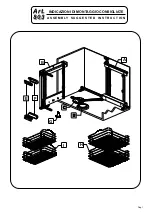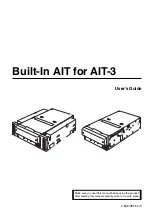
84
SNMP Traps
107
roboticsNotReady
Robotics Not Ready
Indicates that the library’s robotics system has
transitioned from a “ready” to “not ready” state.
Traps 106 and 107 may occur as part of a startup or
shutdown procedure. If they occur at another time, a
library door may be open.
108
logicalLibraryStateChange
Logical Library State Change
Indicates that a logical library, also known as a partition,
has been taken online or offline.
109
connectivityStatusChange
RAS Status Change: Connectivity
a
Indicates that the status of the connectivity subsystem
(which includes the I/O management unit and other
components) has changed. This may indicate a change
to “good” status, so refer to the return value to
determine what action you should take. If the return
value indicates that a problem exists, use the operator
panel or remote web client to determine how to resolve
the issue.
110
controlStatusChange
RAS Status Change: Control
a
Indicates that a library control problem has been
detected.
Indicates that the status of the control subsystem (which
includes system firmware, the operator panel, and the
Library Control Blade) has changed. If the return value
indicates that a problem exists, use the operator panel
or remote web client to determine how to resolve the
issue.
111
coolingStatusChange
RAS Status Change: Cooling
a
Indicates that the status of the cooling subsystem has
changed. If the return value indicates that a problem
exists, use the operator panel or remote web client to
determine how to resolve the issue.
112
drivesStatusChange
RAS Status Change: Drives
a
Indicates that the status of the drives and/or media has
changed. If the return value indicates that a problem
exists, use the operator panel or remote web client to
determine how to resolve the issue.
113
mediaStatusChange
RAS Status Change: Media
a
Indicates that the status of the media has changed. If
the return value indicates that a problem exists, use the
operator panel or remote web client to determine how to
resolve the issue.
Table 1
Status Traps (Continued)
Trap ID
Trap
Description
a. The library issues a trap whenever the aggregate state of one of the Reliability, Availability, and Serviceability (RAS) status
groups changes. Listening for these traps (rather than querying for them) is the preferred method of monitoring the
health of the library.
Summary of Contents for Scalar i500
Page 12: ...6 Description...
Page 82: ...76 MIB Variables Library System Information...
Page 88: ...82 MIB Variables RAS Subsystem...
Page 92: ...86 SNMP Traps...
Page 154: ...148 MIBs Implemented...
Page 156: ...150 Index...
















































